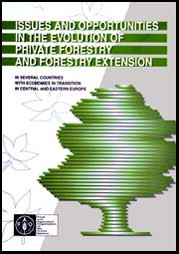
FAO
FOOD AND AGRICULTURE ORGANIZATION OF THE UNITED NATIONS
Rome, 1997
|
The designations employed and the presentation of material in this publication do not imply the expression of any opinion whatsoever on the part of the Food and Agriculture Organization of the United Nations concerning the legal status of any country, territory, city or area or of its authorities, or concerning the delimitation of its frontiers or boundaries. |
All rights reserved. No part of this publication may be reproduced, stored in a retrieval system, or transmitted in any form or by any means, electronic, mechanical, photocopying or otherwise, without the prior permission of the copyright owner. Applications for such permission, with a statement of the purpose and extent of the reproduction, should be addressed to the Director, Information Division, Food and Agriculture Organization of the United Nations, Viale delle Terme di Caracalla, 00100 Rome, Italy.
© FAO 1997
This electronic document has been scanned using optical character recognition (OCR) software and careful manual recorrection. Even if the quality of digitalisation is high, the FAO declines all responsibility for any discrepancies that may exist between the present document and its original printed version.
Forest resources of countries in Central and Eastern Europe
Forest industry
Marketing and trade of wood and wood products
Forestry education
Forestry research
Public participation
Forest policy and legislationInstitutional responsibility for forestry extension
Training of forestry extension personnel
Government support for forestry extension
Organization of private forest owners
Main constraints encountered in forestry extension
Forestry extension needs identified by the CEE
Forestry extension and other land ownership patternsPrivate forestry
Forestry extensionGeneral
Institutional issues
Technical and policy issues
Capacity building issues
Financial and economic issues
Annex 2: Total forest ownership patterns before 1985